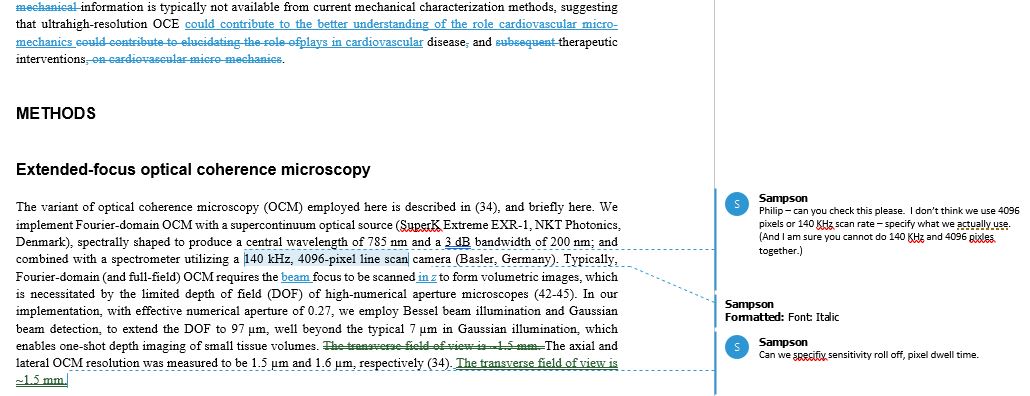Guest post – Professor David Sampson, Pro-Vice-Chancellor, Research & Innovation

I have always liked to write – but when I started out writing down my science, I was rubbish. One of my first papers, a full-length exposition of the work that won me my first EPSRC grant (SERC back then) and set me on my academic career course, came back after first review saying, in a nutshell, “interesting idea, paper should be cut in length by 1/3rd”. Aagghh, I was mortified – but the reviewer was right – I hadn’t yet got it. How to write a paper, that is. I understood the part about telling a story – but it was a rambling personally focused didactic affair, instead of the tight, crystal clear exposition written for the expert non-specialist reader, focused on the novelty, method and perspective on what we had done. I got there, but it took time, and a lot of red ink. My next boss was good for that – small writing in a red pen, like war had broken out on my draft. And many drafts – usually around ten. I learnt to be tight – to explain things unambiguously in plain concise language – scientific Hemingway, not Balzac. And I learnt to eliminate lots of blur – things like unsubstantiated assertions, padding – it is clear that, it is important to realise, note that…, and tautologies. It started to come together.
So, many years later, I am more author than technician – with nearly 200 papers averaging ten pages per paper and 500 words per page – I have published (not counting all the conference materials and book chapters) some one million words. For better or worse, academics are writers.
And isn’t it a joy to read a well written paper that tells its story clearly – and isn’t it a struggle to read a sloppy, turgid piece – and why, then, should I believe the underlying scholarship is any better?
Today I tell my engineering PhD students who like Maths but not English about their folly. There is no escape – we all need to learn and be expert in writing. It is how we communicate. Learn to love it – find your mojo. One popular way with strugglers is to start with dot points. Of course, before that, I like to start with the piccies – what are our results…..and build around that – with dot points about what is key. That helps build the structure. With a sound logical structure, you are set. You can then write the easy bits first – methods, then results, giving you the confidence you need when you get to the hard stuff. Tackle the abstract, intro and conclusion last – and make sure you read those three together at the end – it is amazing how your story can become muddled along the way and key messages modified – they should all stack up together nicely. And lastly, groom the language – use the same name for the same thing throughout. Stick to a consistent nomenclature – it is a big help for the reader.
And once you have been round this ten-draft loop twenty times, you will be good at it! Seriously – it does take persistence. And, at the end of the day, publishing is for life – and once it is out there, there is no getting it back. So, publishing is one discipline that rewards perfectionism. Make it perfect – and enjoy it for the rest of your career! (I hope you won’t reject my article because is at least 1/3rd too long 😊).
